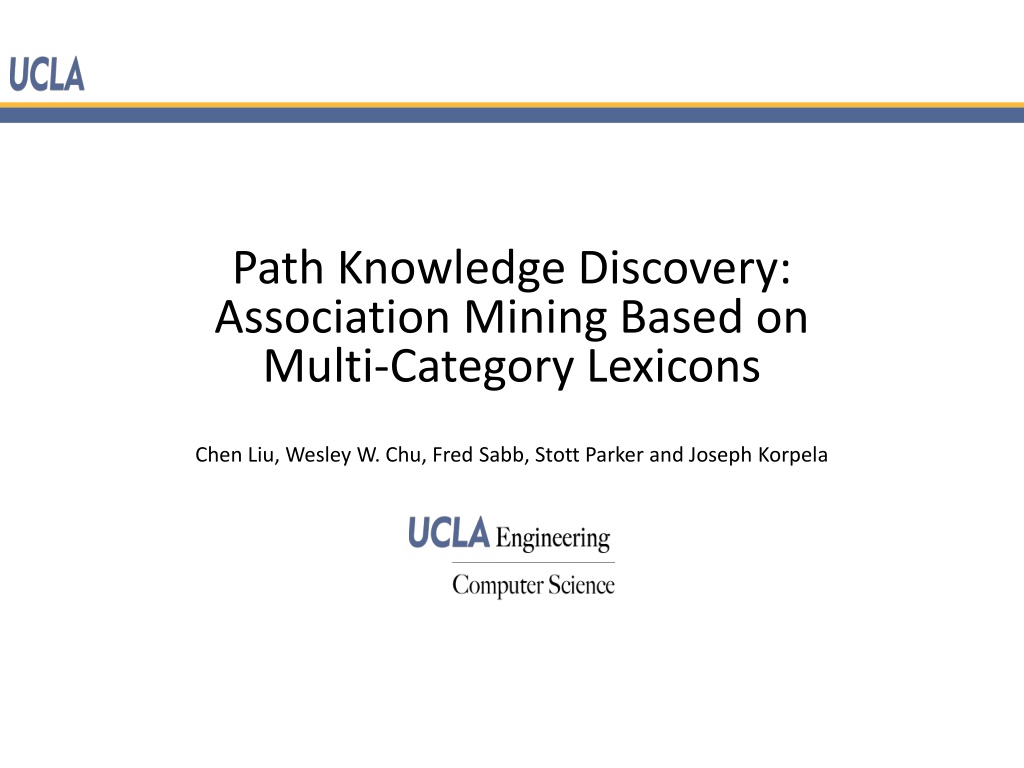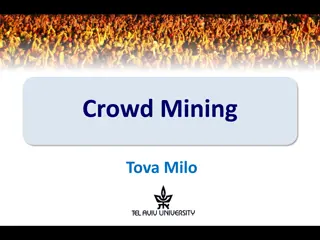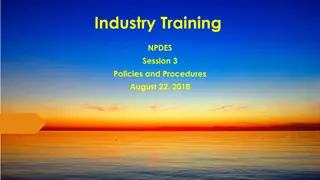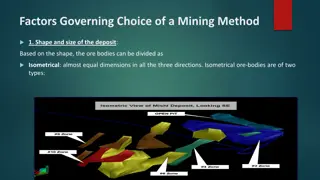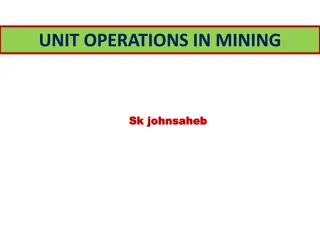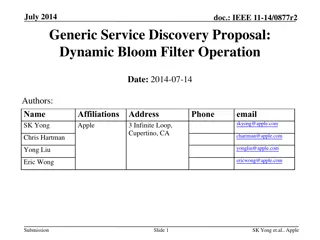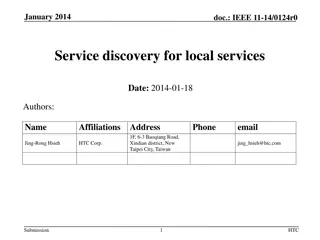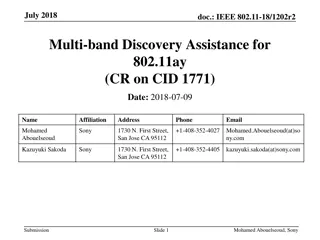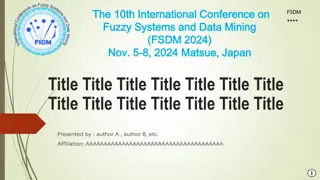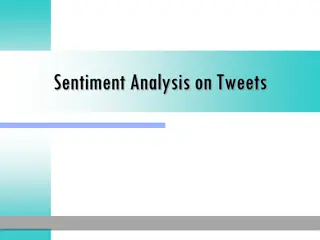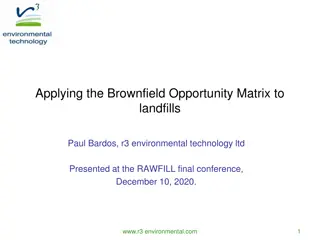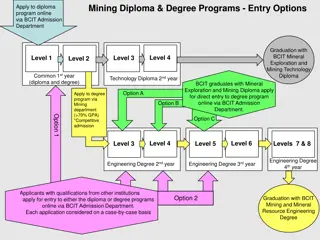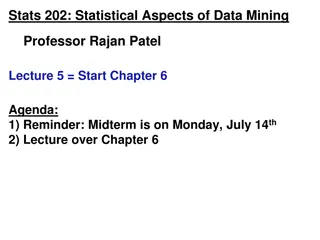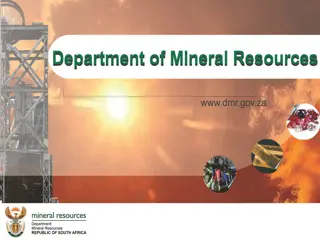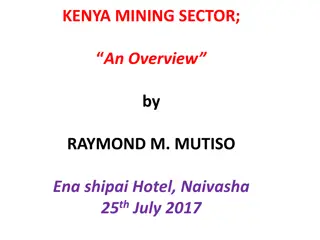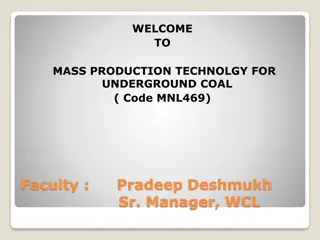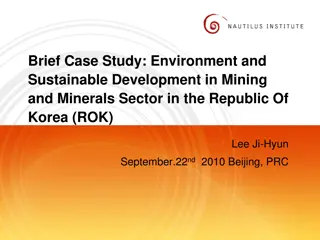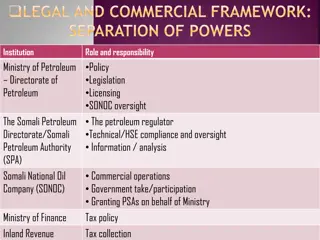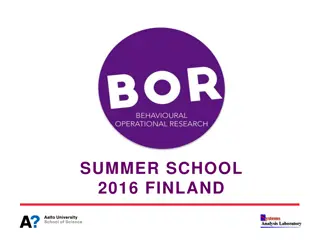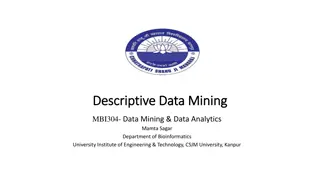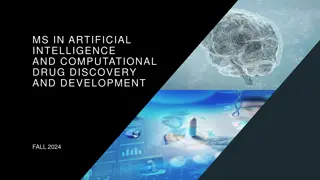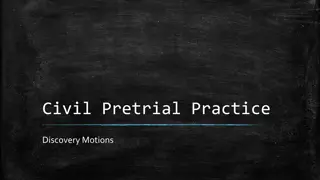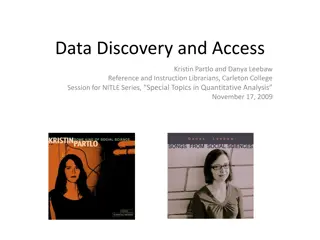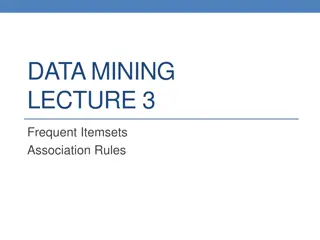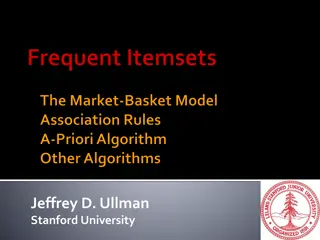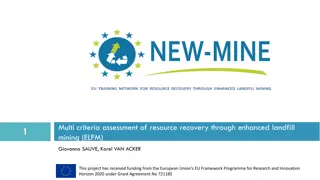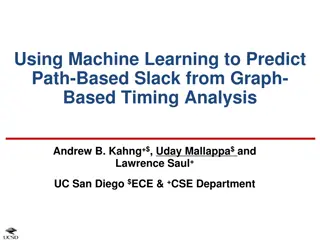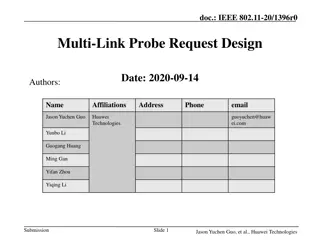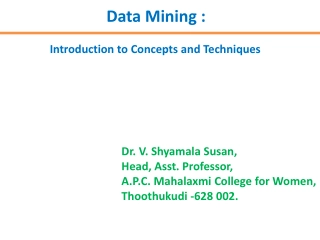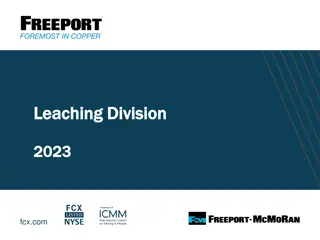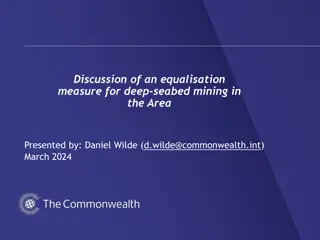Path Knowledge Discovery: Association Mining Based on Multi-Category Lexicons
Explore the concept of path knowledge discovery through association mining using multi-category lexicons. The motivation behind this study is to bridge concepts across disciplines and facilitate scientific discovery by identifying chains of associations. This process involves infrastructure for path mining, discovering sequences of associations, and validating results. The goal is to improve knowledge retrieval methods and provide a structured approach to accessing information in a complex corpus.
Download Presentation

Please find below an Image/Link to download the presentation.
The content on the website is provided AS IS for your information and personal use only. It may not be sold, licensed, or shared on other websites without obtaining consent from the author. Download presentation by click this link. If you encounter any issues during the download, it is possible that the publisher has removed the file from their server.
E N D
Presentation Transcript
Path Knowledge Discovery: Association Mining Based on Multi-Category Lexicons Chen Liu, Wesley W. Chu, Fred Sabb, Stott Parker and Joseph Korpela
Outline Motivation Infrastructure Path Mining: Discovering Sequences of Associations Path Content Retrieval Method Validation: Comparing to Traditional Meta Analysis Process Conclusion
Motivation (1/2) Knowledge discovery Increasingly, scientific discovery requires the connection of concepts across disciplines Often there are no direct association between two given concepts in existing scientific literature In such situations, we must search for chains of associations How to search for chains of associations? Traditional search methods require researchers to manually review documents in a potential chain When searching a large corpus, a manual search of all returned documents becomes infeasible This can lead to biased or arbitrary methods of reduction
Motivation (2/2) What GENES are associated with ADHD? DRD2 A1 ADHD ADHD Attention Deficit Working Memory Dysfunction PFC DRD2 A1
Infrastructure for Path Mining Discovery (1/2) Sources of Knowledge Multilevel Lexicon Evolving concept hierarchy Concepts are mapped to specific domains/matched with synonyms SYNDROME COGNITIVE CONCEPT Declarative Memory ADHD Bipolar Disorder ADHD ADD Attention Deficit Disorder Attention Deficit Hyperactivity Disorder Declarative Memory Episodic Memory Semi-Structured Corpus Distributed in HTML/XML format Maps concepts to documents at varying granularities <document> </document> <paragraph id= 1 > <sentence id= 1 >Content </sentence> <sentence id= 2 >Content </sentence> <figure id= 1 caption= > </figure> </paragraph> <paragraph id= 2 > </paragraph>
Infrastructure for Path Mining Discovery (2/2) Facilitating Knowledge Discovery Association index How frequently two concepts occur together in a paper Measures the strengths of relations Facilitates path mining Document element index In which documents the concepts occur Provides evidence of relations between concepts Facilitates path content retrieval
Path Mining Given a query, find the sequences of associations among concepts between different domains of knowledge Find the paths based on their occurrences in corpus (i.e. pair-wise associations) Syndromes: Symptoms: Brain Signaling: Cognitive Concepts: Genes: Shrink-Wrap-Loving Tech Syndrom Impaired Response Inhibition Thinner Impulsivity DRD4 VNTR Orbitofrontal Cortex Measure the strengths of the path Path Ranking: Find the most relevant path for a query
Using Wildcards in a Path Query Allow paths to match with any concept in a concept domain Example: Researcher is interested in paths connecting concept C to concepts from the domain, via any concept in domain
Types of Associations in Path Local Association Global Association Local Associations Local Associations Approach Global Associations Approach Approach Global Associations Approach Local Associations Approach Local Associations Global Associations Approach Approach Global Associations Approach supp=1536, conf=0.1, IS=0.14 Local Associations Approach supp=1536, conf=0.1, IS=0.14 Local Associations supp=1536, conf=0.1, IS=0.14 Global Associations Approach Approach supp=1536, conf=0.1, IS=0.14 Global Associations Approach supp=1536, conf=0.1, IS=0.14 supp=1536, conf=0.1, IS=0.14 supp=1536, conf=0.1, IS=0.14 supp=1536, conf=0.1, IS=0.14 supp=1943, conf=0.2, IS=0.24 supp=1536, conf=0.1, IS=0.14 supp=409, conf=0.27, IS=0.51 supp=1536, conf=0.1, IS=0.14 supp=1536, conf=0.1, IS=0.14 supp=1943, conf=0.2, IS=0.24 supp=409, conf=0.27, IS=0.51 supp=1536, conf=0.1, IS=0.14 supp=1943, conf=0.2, IS=0.24 supp=409, conf=0.27, IS=0.51 supp=1943, conf=0.2, IS=0.24 supp=409, conf=0.27, IS=0.51 supp=1800, conf=0.2, IS=0.15 supp=1943, conf=0.2, IS=0.24 supp=130, conf=0.32, IS=0.56 supp=409, conf=0.27, IS=0.51 supp=1943, conf=0.2, IS=0.24 supp=1800, conf=0.2, IS=0.15 supp=130, conf=0.32, IS=0.56 supp=409, conf=0.27, IS=0.51 supp=1800, conf=0.2, IS=0.15 supp=130, conf=0.32, IS=0.56 supp=1800, conf=0.2, IS=0.15 supp=130, conf=0.32, IS=0.56 (a) (a) (b) (b) supp=1800, conf=0.2, IS=0.15 supp=130, conf=0.32, IS=0.56 supp=1800, conf=0.2, IS=0.15 supp=130, conf=0.32, IS=0.56 (a) (a) (b) (b) (a) (a) (b) (b)
Types of Associations in Path Local Association Approach Global Association Approach Local Associations Approach Approach Local Associations Global Associations Approach Approach Global Associations Local Associations Global Associations Local Associations Global Associations Approach supp=1536, conf=0.1, IS=0.14 supp=1536, conf=0.1, IS=0.14 Approach supp=1536, conf=0.1, IS=0.14 supp=1536, conf=0.1, IS=0.14 Approach Approach supp=1536, conf=0.1, IS=0.14 supp=1536, conf=0.1, IS=0.14 supp=1536, conf=0.1, IS=0.14 supp=1536, conf=0.1, IS=0.14 supp=1943, conf=0.2, IS=0.24 supp=1943, conf=0.2, IS=0.24 supp=409, conf=0.27, IS=0.51 supp=409, conf=0.27, IS=0.51 supp=1943, conf=0.2, IS=0.24 supp=409, conf=0.27, IS=0.51 supp=1943, conf=0.2, IS=0.24 supp=409, conf=0.27, IS=0.51 supp=1800, conf=0.2, IS=0.15 supp=1800, conf=0.2, IS=0.15 supp=130, conf=0.32, IS=0.56 supp=130, conf=0.32, IS=0.56 supp=1800, conf=0.2, IS=0.15 supp=130, conf=0.32, IS=0.56 supp=1800, conf=0.2, IS=0.15 supp=130, conf=0.32, IS=0.56 (a) (a) (b) (b) (a) (b) (a) (b)
Types of Associations in Path Local Association Approach Global Association Approach Local Associations Local Associations Approach Approach Global Associations Approach Approach Global Associations supp=1536, conf=0.1, IS=0.14 supp=1536, conf=0.1, IS=0.14 supp=1536, conf=0.1, IS=0.14 supp=1536, conf=0.1, IS=0.14 supp=1943, conf=0.2, IS=0.24 supp=1943, conf=0.2, IS=0.24 supp=409, conf=0.27, IS=0.51 supp=409, conf=0.27, IS=0.51 supp=1800, conf=0.2, IS=0.15 supp=1800, conf=0.2, IS=0.15 supp=130, conf=0.32, IS=0.56 supp=130, conf=0.32, IS=0.56 (a) (a) (b) (b)
Phenograph: Aggregated Results of Path Mining Combine the paths that satisfy the path query.
Path Ranking Pick top K paths for a query Weakest link approach For each path, use the strength of the weakest link as the strength of the whole path Among all paths, pick the top K paths with highest strengths
Path Content Retrieval Content is important for understanding the interrelations specified by the paths Differences from traditional information retrieval: Query is a set of relations instead of query terms Retrieved content should be in fine granularity so that it can explicitly explain the relations Specific types of content may be required (e.g. quantitative results from experiments, tables, etc.)
Path Content Retrieval Example: Document Content Explorer (1/2) Facilitates Path Content Retrieval Coarse Granularity: Displays list of papers returned using the user-defined query Papers listed with summary data
Path Content Retrieval Example: Document Content Explorer (2/2) Fine Granularity: Content from paper is displayed with relevant material highlighted for easier viewing Different type of contents in corresponding tabs Concepts are highlighted in the matching content
Method Validation: Applying Path Knowledge Discovery to Phenomics Research Mined corpus of 9000 papers Retrieved from PubMed Central using query designed by domain experts Searched for data supporting the heritability of cognitive control Cognitive control Complex process that involves different phenotype components Each phenotype component is measured by different behavioral tasks Heritability of these behavioral tasks are reported in scientific publications
Traditional Manual Approach: Meta-Analysis Search corpus to find relevant publications Publications retrieved using a literature search engine Researcher manually reviews the publications to determine which are relevant Researcher determines which publications form a chain of associations Using content found, extract the measures of cognitive tasks (e.g. heritability) and their corresponding cognitive processes Combine the heritability measures for different cognitive processes to compute the heritability of cognitive control Problems of the manual approach: Reading papers, digesting the content, and picking the numbers manually is time consuming, biased and not scalable.
Automated Approach: Path Knowledge Discovery (1/2) Path mining: Searched for paths connecting cognitive control with indicators cognitive control sub- cognitive tasks processes Path content retrieval: Found relevant quantitative results in those publications Meta-Analysis: Researchers then reviewed those results to perform the meta-analysis
Automated Approach: Path Knowledge Discovery (2/2) Comparison to manual analysis: 12 out of 15 tasks were correctly associated with corresponding sub-processes Increased corpus size: 150 (manual) << 9000 (automated) Able to use quantitative measures for ranking relation rather than matching manually Reduces error and bias
Conclusion Path Knowledge Discovery Identifies and measures a path of knowledge Retrieves relevant coarse- and fine-granularity content describing the relations specified in the path Validated the methodology using the heritability example in cognitive control Significantly increases the scalability and efficiency of conducting complex cross-discipline analysis
Path Content Retrieval Query processing Translate the path to queries digestible by search systems Example Schizophrenia -> working memory -> PFC Translate to: (schizophrenia AND working memory) OR (working memory AND PFC)
Lexicon-Based Query Expansion Expand according to the synonyms: ADHD AND impaired response inhibition (attention deficit hyperactivity disorder OR attention deficit disorder OR ADHD OR ADD) AND impaired response inhibition Expand according to concepts/sub-concepts: underactive prefrontal cortex AND dopamine receptors underactive prefrontal cortex AND (DRD1 OR DRD2 OR D5-like)
Path Content Retrieval Retrieve relevant path content Vector space model Multi-granularity content First rank by coarse-granularity content Documents Sections For each item of coarse-granularity content, rank its fine-granularity content Assertions (sentences) Figures Tables
